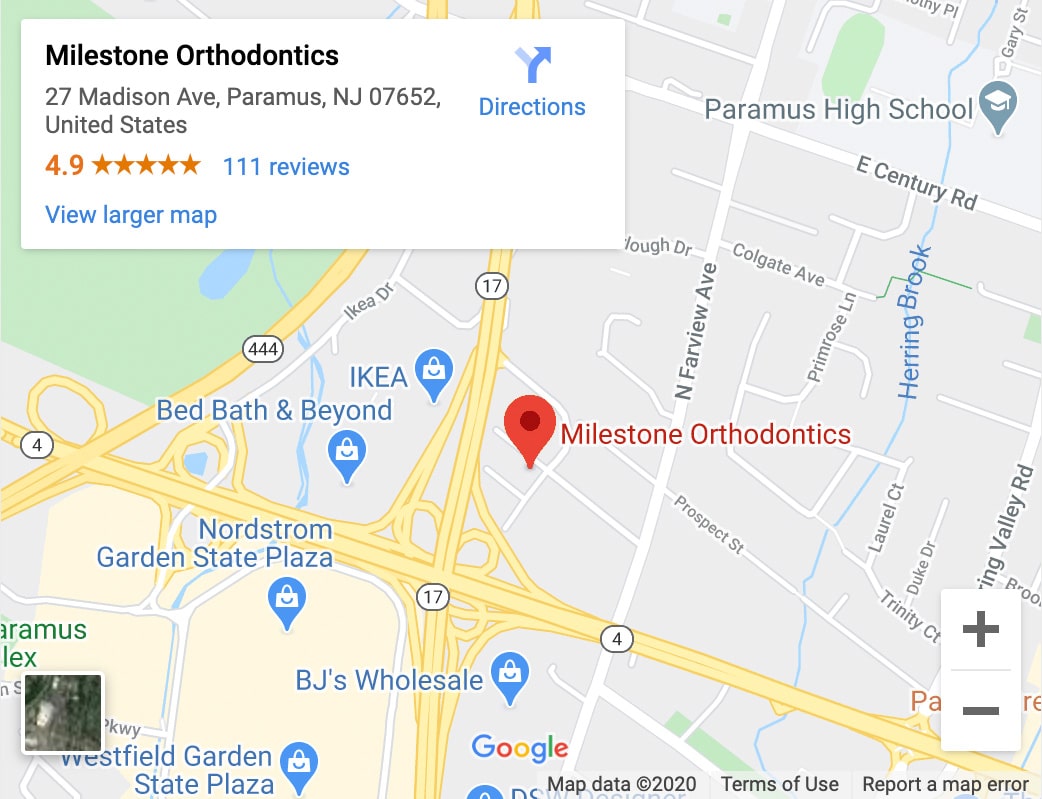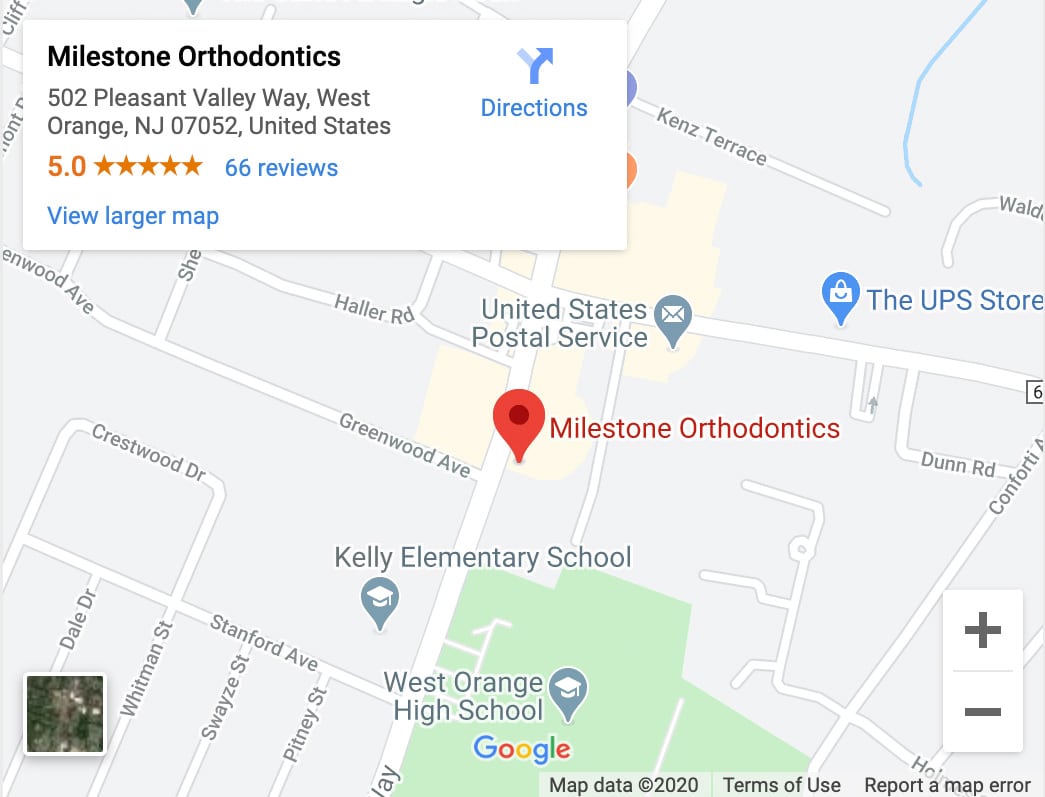As parents, we always want the best for our children, including ensuring their health and well-being. When we think about their health, we often focus on nutrition, exercise, and regular check-ups, but there’s another crucial aspect that sometimes goes unnoticed: their oral health. Early orthodontic intervention offers a proactive solution to potential dental problems down the road.
Exploring the advantages of addressing orthodontic issues in children at an early age can help you make a decision that can set your child on the path to a lifetime of confident smiles and improved oral health.
Understanding Early Orthodontic Intervention
Early orthodontic intervention, often referred to as interceptive orthodontics, is the practice of identifying and addressing orthodontic problems in children at an early age, typically before adolescence. This proactive approach aims to correct issues while a child’s jaw is still growing and teeth are developing, making the treatment process more manageable and effective.
The Ideal Age Range for Early Orthodontic Intervention
The ideal age for early orthodontic assessment and potential intervention varies depending on the child, but it generally begins around the age of 7. At this stage, a child has a mix of baby teeth and permanent teeth, allowing orthodontists to assess their dental development and identify any emerging problems.
Common Orthodontic Issues in Children
Several orthodontic issues can surface in childhood, and early intervention can address these concerns before they become more severe. Some common issues include:
- Overcrowding: When there’s insufficient space in the mouth for permanent teeth to emerge correctly.
- Crossbite: A misalignment where the upper and lower teeth do not meet properly when biting.
- Overbite and Underbite: Overbite occurs when the upper front teeth overlap the lower front teeth excessively, while underbite is the opposite, with the lower front teeth overlapping the upper ones.
- Protruding Teeth: When front teeth extend too far forward, they become vulnerable to injury.
- Thumb-Sucking and Tongue Thrusting Habits: These habits can affect dental development and alignment.
Advantages of Early Orthodontic Intervention
Preventing Worsening of Problems
Early orthodontic intervention plays a pivotal role in preventing orthodontic issues from escalating into more severe conditions. When problems are addressed at a young age, it’s often easier to correct them. For example:
- Correcting minor overcrowding can prevent the need for tooth extraction or more extensive orthodontic treatment later in life.
- Resolving misalignments early can avoid jaw joint problems and discomfort.
By nipping these issues in the bud, you spare your child from potential discomfort and inconvenience in the future.
Promoting Proper Growth and Development
A significant advantage of early orthodontic intervention is its positive impact on your child’s facial and jaw development. The growing years present a prime opportunity to guide these developments in the right direction:
- Correcting bite problems early can ensure proper alignment of the jaws, improving facial symmetry.
- Guiding the growth of the jaw can help create adequate space for incoming permanent teeth.
This not only leads to a more appealing appearance but can also contribute to better overall oral health.
Reducing the Need for Extensive Treatment Later
Addressing orthodontic issues during childhood often results in less complex and less costly treatments compared to waiting until adulthood. The sooner problems are identified and treated, the less invasive the solutions tend to be.
- Early orthodontic intervention can eliminate the need for invasive surgical procedures or extractions.
- It can also reduce the duration of orthodontic treatment, making it more manageable for your child.
Saving time and money in the long run through early intervention is a wise investment in your child’s future smile.
Improving Oral Health with Early Orthodontic Intervention
Orthodontic issues can impact more than just the alignment of teeth. Correcting these issues early can lead to improved oral hygiene:
- Properly aligned teeth are easier to clean, reducing the risk of gum disease, cavities, and other dental problems.
- Improved oral hygiene habits can be established more easily when teeth are correctly aligned from an early age.
Ensuring your child’s oral health is on the right track is a gift that keeps giving throughout their life.
Why Is It Called Phase 1 Treatment?
You may have heard the term “Phase 1 treatment” when discussing early orthodontic intervention for children. This is because early orthodontic treatment is the first phase of the 2-Phase Treatment that orthodontists employ to ensure proper alignment results that begin during childhood.
Understanding 2-Phase Treatment
2-Phase Treatment, also known as Two-Phase Orthodontic Treatment, is an approach that involves two separate stages of orthodontic care for children. Each phase serves a specific purpose and is strategically timed to maximize its effectiveness.
Phase 1: Early Orthodontic Intervention
Phase 1 treatment typically begins when a child is around 7 to 10 years old, as mentioned earlier. This initial phase aims to address specific orthodontic issues that are easier to treat while the child’s jaw and facial bones are still growing. During this phase:
- Orthodontists focus on correcting bite problems, eliminating overcrowding, and guiding jaw development.
- Interceptive measures may include the use of appliances like expanders, braces, or retainers.
- Phase 1 Treatment creates a stable foundation for the future alignment of permanent teeth.
Benefits of Phase 1 Treatment:
- Preventing Progression: By addressing issues early, Phase 1 treatment can prevent orthodontic problems from worsening. For example, early correction of a crossbite can avoid more extensive treatments later on.
- Improved Facial Development: Guiding the growth of the jaw and facial bones can result in a more balanced facial appearance and proper alignment of the upper and lower jaws.
- Reduced Treatment Complexity: Phase 1 Treatment sets the stage for Phase 2, which occurs when most permanent teeth have erupted. Since many issues are already addressed in Phase 1, Phase 2 often involves less intensive treatment, making it more comfortable for the child.
Phase 2: Comprehensive Treatment
The second phase, Phase 2 treatment, typically takes place when a child is in their early teenage years, usually around 12 to 14 years old. During this phase:
- Orthodontists focus on fine-tuning the alignment of permanent teeth using braces or other advanced orthodontic appliances.
- Phase 2 ensures that all permanent teeth are correctly aligned for a beautiful and functional smile.
Benefits of Phase 2 Treatment:
- Finishing Touches: Phase 2 fine-tunes the alignment, ensuring that all permanent teeth fit together correctly for a harmonious bite.
- Optimal Aesthetics: Phase 2 treatment enhances the appearance of the smile, boosting the child’s confidence and self-esteem during a critical stage of their life.
Boosting Self-Esteem and Confidence
A child’s smile is not just a physical attribute; it’s a powerful tool that can influence their self-esteem and how they interact with the world. When orthodontic problems are left unattended, they can affect a child’s self-perception and social interactions. Here’s how early intervention can help boost self-esteem:
1. Improved Aesthetics
Early orthodontic intervention corrects alignment issues, creating a more aesthetically pleasing smile. A straight, confident smile can make a child feel better about their appearance, leading to improved self-confidence.
2. Social Interaction
Children can be sensitive to their peers’ perceptions, and orthodontic problems can sometimes lead to teasing or self-consciousness. By addressing these issues early, children can feel more at ease in social situations, leading to improved social interactions and friendships.
3. Academic Performance
Studies have shown a connection between self-esteem and academic performance. A confident child is more likely to actively participate in school and extracurricular activities, which can positively impact their overall success.
4. Long-Term Emotional Well-Being
The positive effects of early orthodontic intervention can extend into adulthood, where individuals with healthy self-esteem tend to have better mental health and overall well-being.
Partner with Milestone Orthodontics for a Lifetime of Smiles
Choose Milestone Orthodontics for your child’s early orthodontic care in Paramus, NJ, and set them on the path to a lifetime of confident smiles and optimal oral health. We follow the recommendations of the American Association of Orthodontists, starting screenings at age 7 to catch and correct potential issues early.
If you’re looking for:
- Early Orthodontic Treatment Paramus
- Phase 1 Orthodontic treatment Paramus
- Orthodontist Paramus NJ
Choose Milestone Orthodontics for you or your child today! Our expert team, led by Dr. Milestone, is dedicated to providing the best care and exceptional results. Schedule an appointment today to ensure your child’s smile blossoms beautifully with Milestone Orthodontics.














